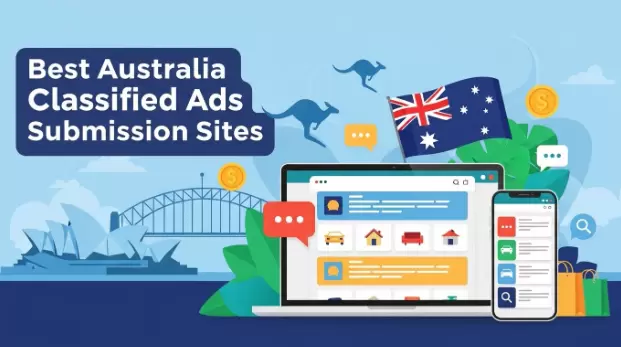When it comes to managing digital interactions, customer relationship marketing (CRM) stands out as a strategy that prioritizes long-term relationships over short-lived transactions. Unlike traditional marketing, which often focuses solely on acquiring new customers, customer relationship marketing aims to understand and fulfill the needs and preferences of existing customers to drive loyalty, engagement, and repeat business. It involves tactics like personalized communication, exceptional customer service, and targeted marketing efforts to foster trust and loyalty among customers.
It is important to understand CRM in today's competitive business landscape. Businesses should focus on building strong relationships with existing customers to increase customer lifetime value, reduce churn rates, and generate more revenue over time. More so, having satisfied customers means having them likely to become your brand advocates. They can then refer new customers and contribute to your business’ organic growth. Furthermore, by investing in CRM, businesses can create a loyal customer base that provides ongoing support and contributes to the overall success of the company.
In this article, we will share practical strategies for implementing effective customer relationship marketing initiatives. We will also discuss real-world examples of successful CRM strategies and how businesses can apply these principles to their own to drive customer loyalty and long-term growth.
Strategies for Effective Customer Relationship Marketing

Online long-term success requires building and maintaining strong relationships with customers. In this fiercely competitive landscape, businesses should employ effective customer relationship marketing strategies to acquire new customers and retain existing ones. Here are the CRM strategies businesses can use to forge meaningful connections with their customers, drive revenue growth, and sustain a competitive edge in their respective industries.
Build an Omni Channel Presence
An omnichannel presence isn't just about being on multiple platforms. Regardless of how your business chooses to engage with your brand, you have to create a seamless and cohesive experience for your customers. You need to understand your audience and strategically select channels to tailor your approach to meet their preferences and maximize your impact. From social media and email to in-store visits, every touchpoint should contribute to a unified customer journey.
Being omnipresent also entails consistency. This is key to maintaining a strong brand image and messaging across all channels. Through this, customers receive a consistent experience and it reinforces your brand identity. By seamlessly integrating online and offline channels and leveraging technology to facilitate data sharing, you can provide customers with a frictionless experience that encourages engagement and loyalty.
Automate Customer Support
Over the years, technology has advanced significantly. With advanced technology, businesses can streamline processes, particularly online. Handling a high volume of inquiries can indeed be daunting for even the most dedicated team.
By automating routine tasks, workflows become more efficient. Automating customer support also leads your team to handle a higher volume of inquiries in less time. This translates to expedited resolutions and increased satisfaction among customers. In fact, due to its convenience, an increasing number of consumers are favoring automated customer service for basic inquiries.
Follow these strategies to strengthen your customer relationships and gain an edge in the battle for customer loyalty:
- Determine which support tasks can be automated without sacrificing quality.
- Use chatbots for quick responses to simple queries.
- Ensure chatbots can escalate complex issues to human agents.
- Implement a ticketing system to manage and track customer support requests.
- Automate ticket creation and assignment to relevant support agents.
- Develop a comprehensive knowledge base to provide self-service options for customers.
- Regularly update the knowledge base with relevant and accurate information.
- Use AI and machine learning to analyze customer data and predict support needs.
- Optimize and refine automated processes based on customer feedback and performance metrics.
- Provide training to support agents on how to use automated tools effectively.
- Encourage agents to focus on complex issues that require human intervention.
- Ensure automated support systems maintain a human-like tone and language.
Understand Customer Journey
Establish a strong customer relationship by evaluating your customer’s viewpoint. This process entails mapping out and analyzing the customer’s journey to identify pain points and optimize experiences. In turn, you can better understand customer needs and build stronger relationships with them, which can lead to increased loyalty, satisfaction, and long-term success.
Here's how understanding the customer journey becomes a powerful strategy for effective customer relationship management:
- Imagine your customer journey as a map. You should start from initial awareness to post-sale interactions.
- Identify customer pain points. Look at elements like confusing website checkouts or unclear return policies and address them.
- Recognize critical "moments of truth" that shape customer perception. These can range from first brand interactions to
- customer service experiences.
- Utilize the understanding of the customer journey to personalize messaging and offerings at each touchpoint.
- Create a seamless and positive customer journey by addressing pain points, optimizing touchpoints, and personalizing
- interactions to build trust and loyalty.
Use CRM Tools
Having the right resources is essential to navigate the complexities of customer interactions. A comprehensive approach involves not just understanding your customers but also utilizing the best tools available to manage those relationships. Customer relationships are the lifeblood of any business. But then, managing this complex web of business interactions can quickly turn chaotic. That's where CRM tools come in.
These tools, such as the ones in this CRM tools list, streamline processes, automate tasks, and provide valuable insights into customer behavior. As long as you effectively employ the right CRM tools in your business, you can build stronger connections and a loyal customer base. Additionally, leveraging a diverse CRM tools list allows you to compare features and functionalities, ensuring you select the best solutions tailored to your needs.
Here's how you can turn CRM tools into your secret weapon for streamlined processes and better customer connections:
- Evaluate CRM tools based on your business needs and goals.
- Take into account elements such as user-friendliness, scalability, and incorporation.
- Roll out CRM tools gradually, starting with core features.
- Provide training to employees on effective tool usage.
- Use CRM tools to automate data entry, lead generation, and reminders.
- Implement workflows to streamline customer interactions.
- Utilize CRM tools to segment customers based on demographics and behavior.
- Tailor marketing strategies for each segment to boost engagement.
- Collect and analyze customer behavior data for insights.
- Identify opportunities for improvement based on data analysis.
- Customize interactions based on customer preferences.
- Utilize features like personalized emails and recommendations.
- Establish metrics to measure CRM strategy success.
- Regularly monitor metrics for areas of improvement.
- Update CRM tools and strategies based on customer feedback.
- Stay updated with new CRM features and trends for ongoing improvement.
Personalize Your Communication
Customers seek more than one-size-fits-all communication. They crave personalized experiences that recognize their individuality as seen from 67% of consumers who would like to receive personalized promotions or offers based on their spending habits when shopping in-store or online. That is why businesses must embrace personalized communication to enhance engagement, build trust, and foster lasting loyalty. This approach isn't about intrusive surveillance; it's about leveraging data to understand customers' preferences and behaviours.
In the online landscape where generic approaches are no longer effective, your businesses must tailor their messages to cater to individual customer needs and preferences. Your business can create meaningful interactions that deepen connections and drive long-term loyalty and advocacy when you use language and content that resonates with customers. This can help create authentic dialogue while you deliver relevant messages. Here's how you can personalize your business communication processes:
- Speak Your Customer’s Language. Segment your customer base and tailor communication style and content to resonate with each segment.
- Go for Personalized Interactions. Use customer data to recommend products, offer promotions, or acknowledge past interactions for a more personalized touch.
- Choose the Right and Message. Select the appropriate communication channels for different messages to reach customers effectively.
- Build a Two-Way Street. Encourage feedback from customers to refine communication strategies and better meet their preferences.
- Create a Loyalty Loop. Personalize your communication to build trust and loyalty. This way, you can have repeat business and positive word-of-mouth recommendations.
Focus on User Experience
Customer interactions shape perceptions and foster trust. Prioritizing user experience (UX) is paramount as it can either enhance or hinder customer relationships. It acts as the foundation for achieving lasting business success.
By ensuring that every touchpoint in the customer journey is effortless and enjoyable, businesses can forge deeper connections with their audience. This ultimately leads to higher levels of customer satisfaction, increased loyalty, and a stronger affinity for the brand.
Here are the things you can do to improve UX:
- Understand User Needs. Conduct research to grasp what users want and the concerns they struggle with. Use these insights to shape the design and development of user experiences.
- Streamline Navigation. Make navigation straightforward, consistent, and easy to follow across all platforms. You can also offer clear instructions and guidance.
- Optimize Performance. Speed up load times and ensure responsiveness, especially for mobile devices. A smooth experience keeps users engaged and satisfied.
- Integrate Feedback. Set up systems to collect user feedback regularly. Use this input to refine and enhance the user experience continually.
- User-Centered Design. Base design decisions on user needs and preferences. Test and refine design elements to ensure they meet user expectations.
- Monitor and Adapt. Establish metrics to gauge UX success and regularly analyze them. Adapt UX strategies based on user feedback and industry trends to keep improving.
Publish Value-Adding Content
Browsing online means swimming through lots of content. In this digital battleground, the challenge lies in capturing customer attention amidst the abundance of available data. To rise above the noise, you must create genuinely valuable content that stands out.
Valuable content transcends traditional marketing tactics. Through informative, engaging, and interactive content, you can establish a strong presence in customers' minds. In turn, this can help you cultivate deeper connections with your audience.
Here are additional ways you can craft valuable content:
- Offer blog posts, articles, or videos that address customer needs.
- Provide ongoing support through informative content.
- Offer tutorials and industry insights to maintain interest.
- Invite comments to tailor content to audience preferences.
- Engage a wider audience with varied content types.
- Monitor feedback and trends to improve content impact.
Implement Customer Relationship Marketing Strategies for Digital Success
In the vast digital market, implementing customer relationship marketing strategies is crucial for your business to succeed online. These strategies help build stronger relationships with customers, leading to increased loyalty and retention. The tips in this article provide valuable insights for effectively connecting with customers and encouraging their return while also boosting referrals and growing your brand.
Use CRM software alongside our proven strategies to personalize interactions and meet individual customer needs. Make sure to implement timely communication with customers to maintain trust and positive relationships. By establishing clear communication channels and highlighting the benefits of new features, your business can encourage customer adoption and enhance overall customer value.


 Table of Content
Table of Content










